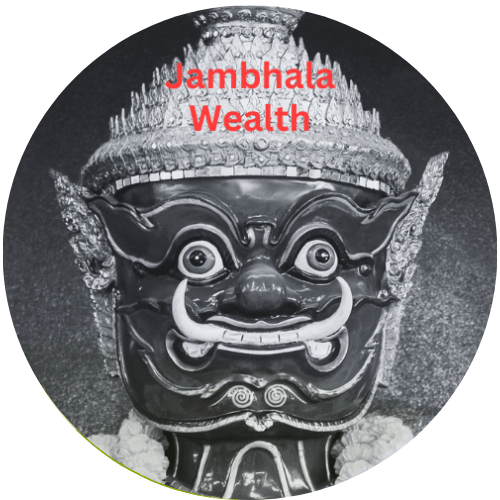
Letting go isn’t easy.
Past negative experiences can cling to us, affecting our present and clouding our future.
The first step towards a peaceful mind involves acknowledging the weight we carry and deciding to set it down.
Holding onto past negativity drains our energy.
It keeps us stuck in cycles of resentment and pain, hindering our growth and happiness.
Letting go allows us to experience life more fully and joyfully.
Buddhist teachings offer profound insights into this journey.
Central to these teachings is the concept that suffering is a part of life, but it’s not permanent or defining.
This perspective helps us see negative experiences as transient, encouraging us to detach from them.
We begin by recognizing that clinging to the past doesn’t change it.
What happened has happened.
Our power lies in how we respond to these experiences now.
Acknowledging this shifts our focus from the pain of the past to the possibilities of the present.
Buddhism emphasizes mindfulness – being fully present in each moment.
By practising mindfulness, we cultivate an awareness that helps us observe our thoughts and feelings without judgment.
This gentle observation makes it easier to release what no longer serves us.
Embarking on this journey means committing to self-compassion.
Be kind to yourself as you navigate these changes. Understand that letting go is a process, not a one-time event. It requires patience, persistence, and the willingness to face discomfort.
Seeing Reality: The Buddhist Perspective
Buddhism teaches that our thoughts and emotions often cloud our perception of reality.
These mental states can distort our view, creating a sense of reality that feels more negative than it truly is.
In Buddhism, reality is seen as neutral.
It’s neither inherently good nor bad.
Our minds assign these labels based on our experiences and conditioning.
Recognizing this helps us break free from negativity as we start to see things as they are instead of through the lens of our past.
A fundamental practice is to observe without judgment.
Notice the thoughts and feelings that arise, acknowledge them, but don’t get entangled in them.
This helps to foster an objective perspective, reducing the grip of negativity.
Meditation plays a key role here.
It trains the mind to stay present and observe without reaction.
Regular meditation helps us cultivate a state of calm and clarity, making it easier to see reality as it is.
This clear seeing allows us to respond rather than react, making our day-to-day life smoother.
Applying this perspective means accepting that life has ups and downs and that both are part of the human experience.
Instead of fighting against unpleasant moments, we learn to flow with them, understanding that they are temporary.
By seeing reality clearly, we start dismantling the mental barriers holding us back.
It’s a process of continuous practice, but each step brings us closer to a state of peace and acceptance.
Cleansing and Purification: Techniques to Release Negative Energy
Buddhism offers a variety of practices aimed at cleansing the mind and body of negative energy.
These purification techniques are designed to help us release the emotional and mental burdens that weigh us down, creating space for positivity and peace.
Start with simple meditation.
This practice helps quiet the mind and allows us to observe our thoughts and feelings without judgment. Find a quiet place, sit comfortably, close your eyes, and focus on your breath. As thoughts arise, gently acknowledge them and let them go. Over time, this practice can bring a sense of calm and clarity to your mind.
Mindfulness meditation is another effective technique.
This involves staying present and fully engaged with whatever you’re doing, whether it’s eating, walking, or simply breathing. By grounding ourselves in the present, we can prevent the mind from wandering into past regrets or future worries.
Breathing exercises also play a crucial role in emotional release.
Deep, purposeful breaths help to calm the nervous system and release built-up tension. Try the 4-7-8 technique:
- inhale quietly through your nose for a count of four
- hold your breath for seven
- exhale completely through your mouth for a count of eight.
This simple exercise can be practised anytime you’re feeling overwhelmed.
Incorporate daily habits that promote mental cleansing.
Journaling, for instance, can be a powerful way to process and release negative thoughts. Write down whatever comes to mind without filtering or judging it. This helps externalize internal struggles, making them easier to deal with.
Physical activities like yoga or tai chicombine movement with breath, creating a meditative state that helps cleanse both mind and body. These practices enhance flexibility, reduce stress, and promote well-being.
Consistent practice of these techniques helps purify the mind and body, fostering a sense of inner peace and balance.
Cleansing is not a one-time event but a continuous process that supports our journey toward a healthier, more harmonious life.
Creating a Friction-Free Life: Flow Like a River
Life is filled with inevitable challenges and obstacles.
However, how we navigate these determines the quality of our journey.
The metaphor of a river flowing smoothly towards the ocean offers valuable insights into creating a life with less friction.
Imagine a river moving towards the ocean.
It encounters rocks, bends, and narrow passages.
Yet, it continues to flow, finding its way around these obstacles.
Similarly, we reduce internal and external resistance when we approach life’s challenges with fluidity and adaptability.
One practical step to reduce friction is simplifying daily routines.
- Clear away unnecessary clutter, both physical and mental. A clean and organized space can profoundly influence your state of mind. Similarly, decluttering your thoughts helps you focus on what truly matters. Create a to-do list prioritising essential tasks and delegate or let go of what’s less important.
2. Aligning your actions with your intentions is another way to foster a smooth flow. Life feels more harmonious when your daily activities resonate with your core values and goals. Reflect on what truly matters to you and adjust your priorities accordingly. This alignment reduces internal conflict and creates a sense of purpose.
Flexibility is crucial. Life is unpredictable, and rigid plans often lead to frustration. Instead, embrace a flexible mindset. Adapt to changes and see them as opportunities for growth rather than setbacks. This perspective eases stress and cultivates resilience, enabling you to navigate life’s twists and turns more gracefully.
3. Developing supportive habits can also help maintain a friction-free life. Regular exercise, healthy eating, and adequate rest are fundamental to well-being. When you take care of your body, your mind follows suit. Combine these with mindfulness practices to remain grounded and centred.
Approach relationships with the same fluidity. Like a river bed, sometimes you must let go of things obstructing the flow. If specific relationships generate friction, communicate openly, set boundaries, and let go of toxic ties if necessary. Cultivating healthy relationships that encourage mutual growth enhances your life’s overall flow.
Implementing these practical steps creates a life that flows more easily.
Reducing friction isn’t about avoiding difficulties but about learning to navigate them with grace and adaptability.
The Path Forward: Integrating Practices into Everyday Life
Building a sustainable routine that incorporates our discussed practices is essential for long-term well-being.
Start small. Aim to create a daily schedule that includes meditation, mindfulness, and physical activity moments.
These regular practices become the foundation of your mental and emotional health.
Community and support systems can significantly influence your progress.
Surround yourself with individuals who understand and support your journey.
Having a support network can provide encouragement and accountability, whether through local meditation groups, online communities, or trusted friends.
Self-compassion remains vital.
There will be days when sticking to your routine feels challenging.
On such days, remind yourself that it’s okay to falter.
What matters most is the willingness to continue.
Treat setbacks as learning experiences rather than failures.
This attitude nurtures resilience and sustained growth.
Real-life examples of transformation can inspire.
Reflect on personal stories or those of others who have successfully let go of their past and found peace.
These narratives remind us that while the journey is unique for everyone, the possibility of transformation is universal.
Continued growth requires a commitment to learning and adaptation.
Life will always present new challenges, but with the practices and mindset we’ve explored, you’ll be well-equipped to handle them.
Always be open to discovering new techniques and insights to enhance your journey towards a peaceful and fulfilling life.


Mindfulness Practices
Mastering Mindfulness: Overcoming Negative Thoughts for Wealth and Abundance
Mindfulness Techniques To Counteract Negative Thoughts
Mindfulness For Emotional Resilience: Taming The Wild Horse Of The Mind.
5 Mindful Practices for Beginners: Getting into Your Back Mindfully

This article beautifully captures the essence of letting go and its importance for mental and emotional well-being. It’s so true that holding onto past negativity can keep us stuck in cycles of pain and prevent us from fully enjoying the present. The Buddhist teachings on impermanence and mindfulness offer a profound perspective on this, helping us view our past experiences as transient rather than defining.
Overall, this piece provides a thoughtful and actionable guide for anyone looking to embrace a more peaceful and fulfilling life. It’s a journey of continuous practice, but with patience and the right tools, we can create a life that flows with greater ease.
Thank you for this supportive comment. I gather you are already quite spiritually aware, Kavitha! Please share more of your personal experience next time you visit!
Transience is a great word! Everything is transient in the visible world. Have you explored the invisible world much yet?
Balancing Body, Mind & Spirit to Attract Inner Wealth: the Joy of Sound addresses the importance of what we cannot see.
Best wishes on your pathway!
Linden
Your perspective on letting go resonates deeply. Recognizing the weight of past negativity and choosing to release it is a profound step toward inner peace. It’s intriguing how Buddhist teachings align with this process, offering practical tools like mindfulness and meditation to help us detach from past pains and embrace the present. In your experience, how have you found mindfulness and self-compassion to aid in letting go of past negativity?
So glad you have found this insightful. In everything I do, I have learned not to take anything personally. I visualise my goals/dreams and keep on keeping on. In that process, I have come to learn more and more about myself and to appreciate myself more.
Maybe you would like: Guided Imagery For Spiritual Development and Ancient Wisdom of Tibetan Sages: Attracting Inner and Outer Wealth
All the best 🌺
Linden